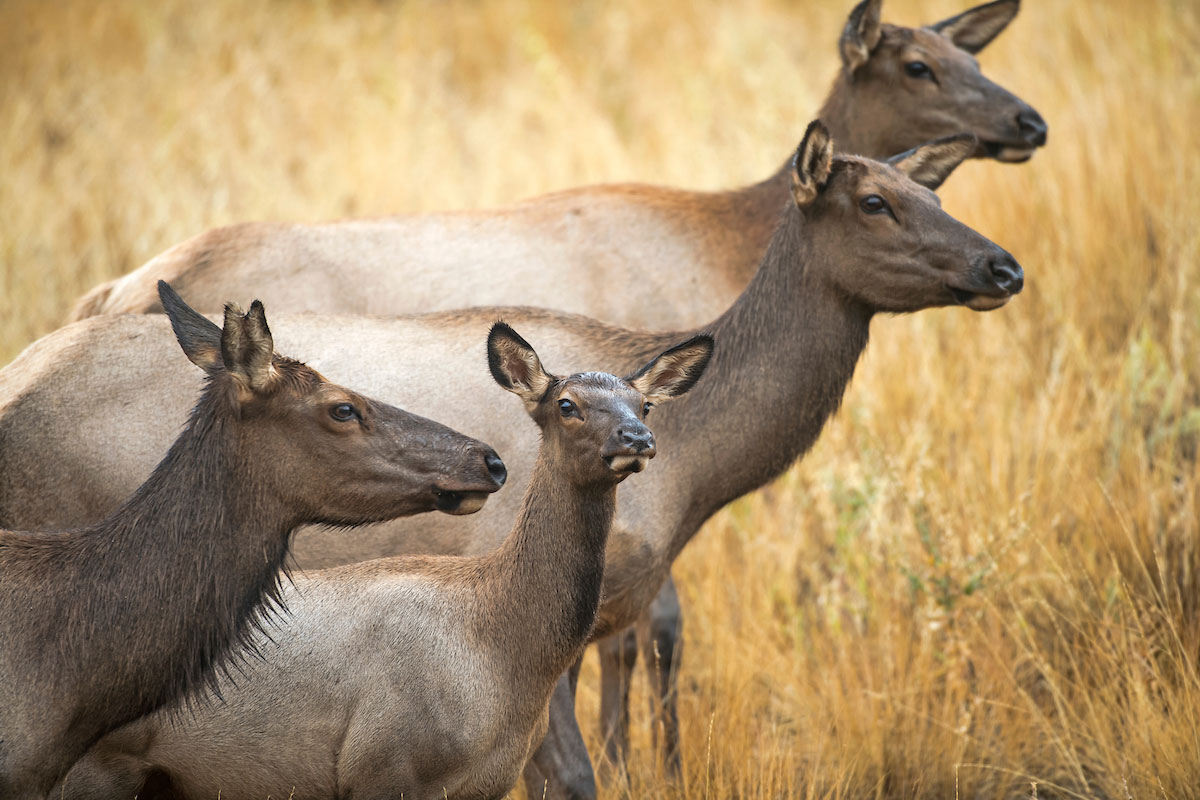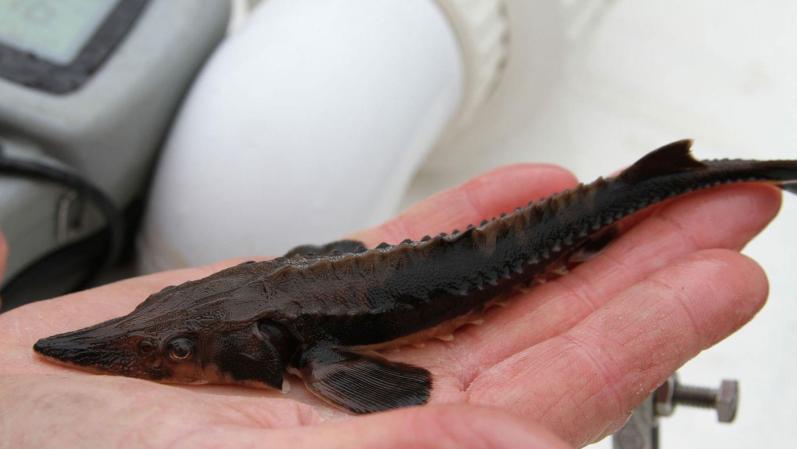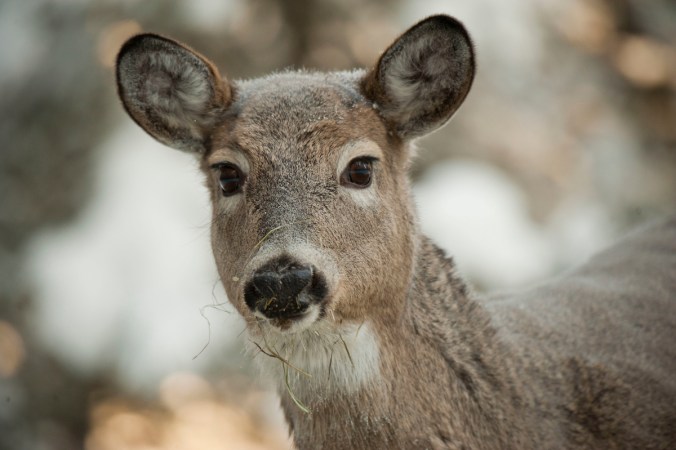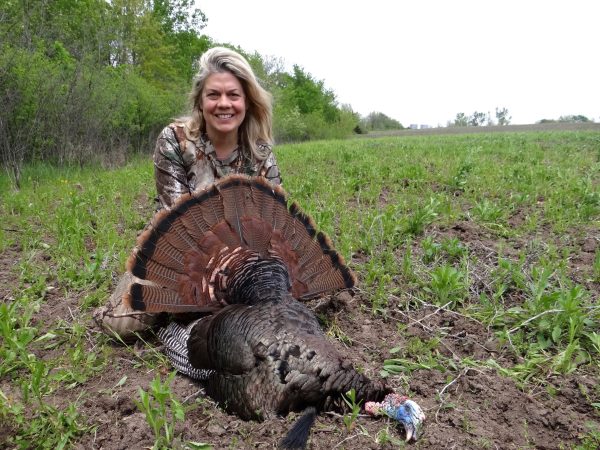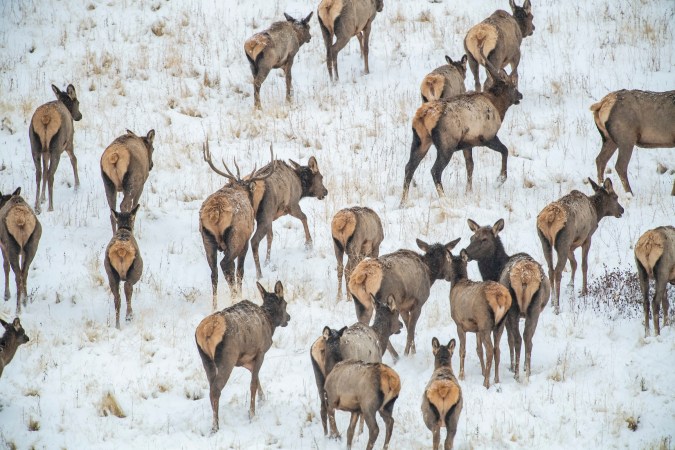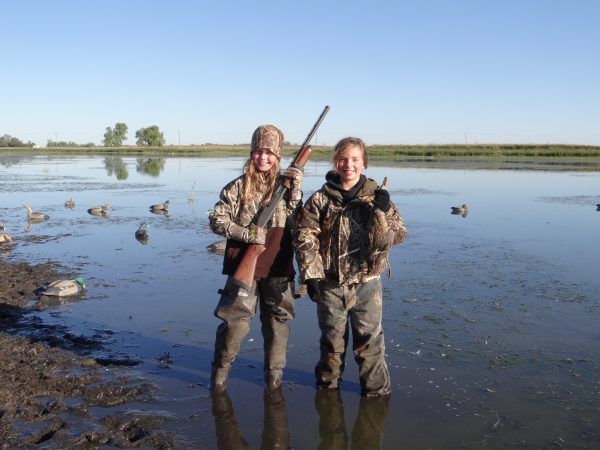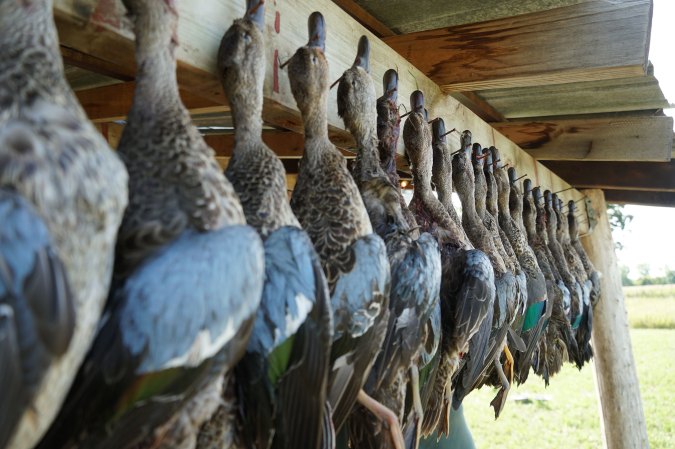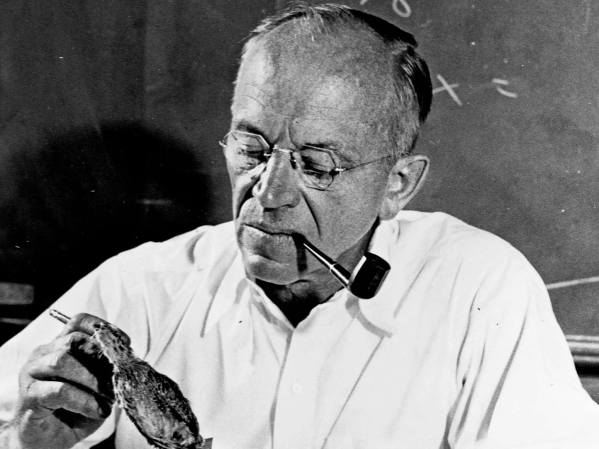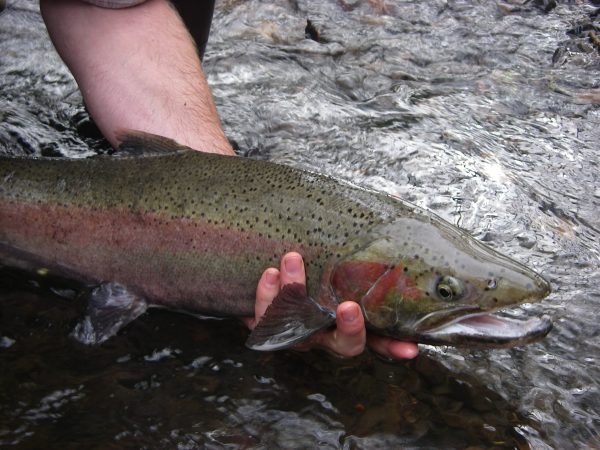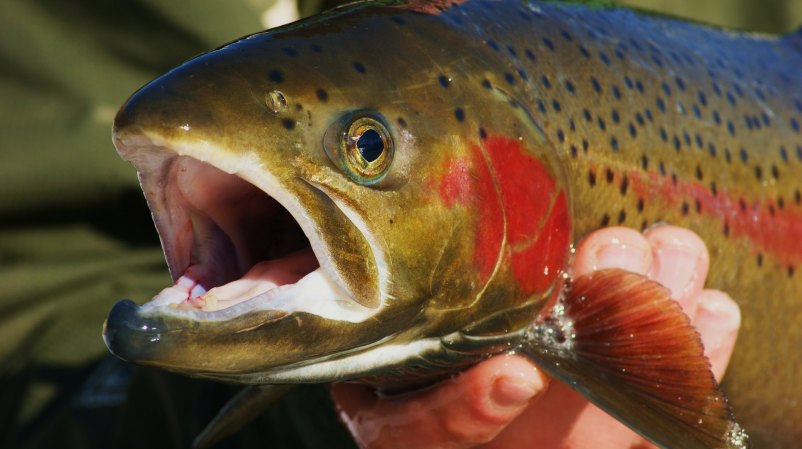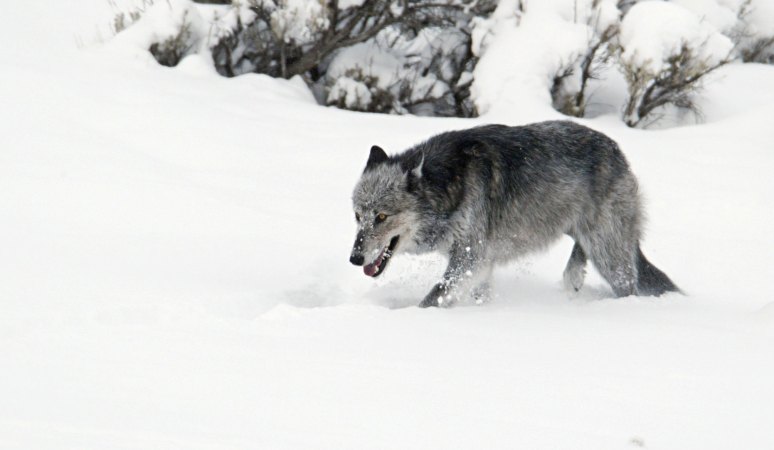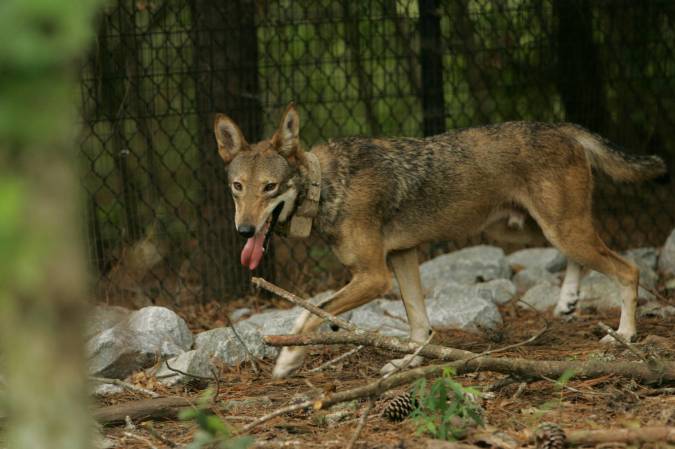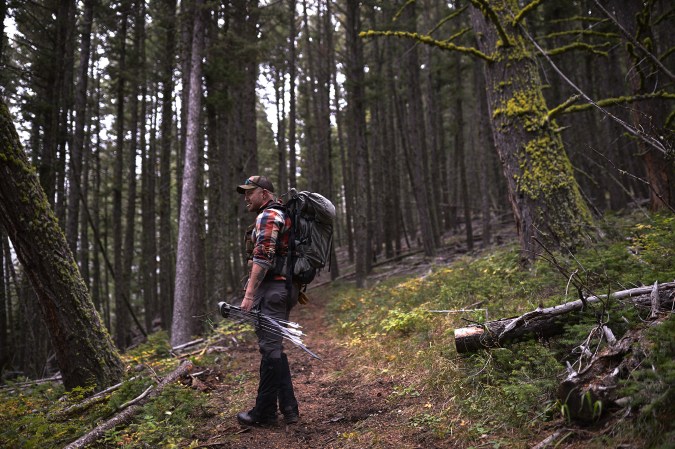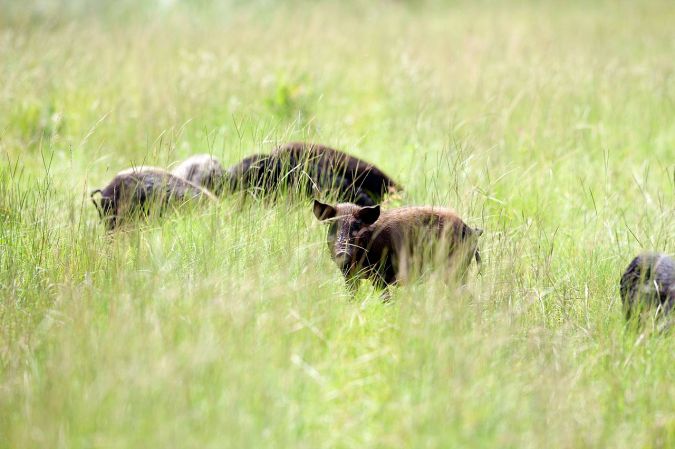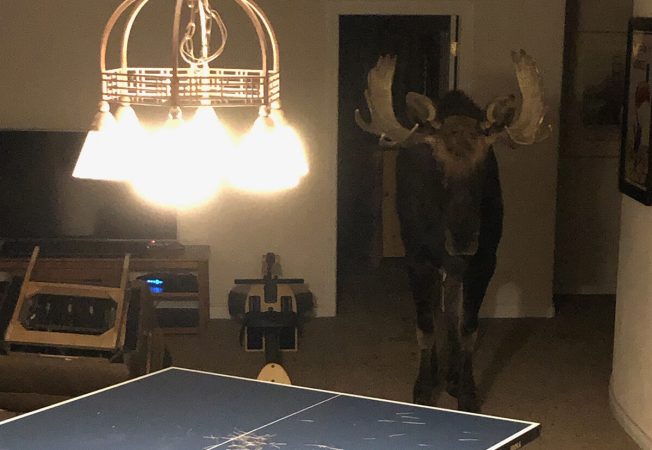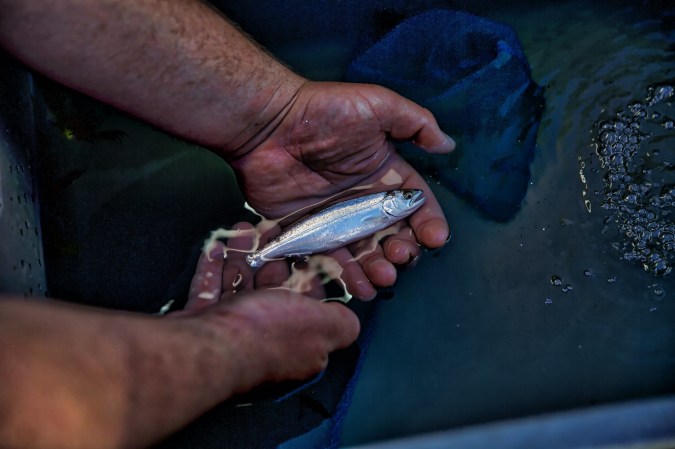Colville, Washington is like a lot of bare-knuckle Western towns, with dusty pickups parked at family businesses, government agencies stabilizing the boombust ranch-and-timber economy, and a string of fast-food franchises along U.S. Highway 395 that heads north to Canada. It’s the late general season for deer this week in northeast Washington, but this year hunters aren’t seeing nearly as many elk or pine-ridge whitetails as usual.
They mostly blame wolves that have moved into this rural corner of Washington over the past decade and the increasing number of cougars that are no longer staying way out in the Colville National Forest. Instead, lions have been coming closer to town, following the scarcity of deer right down to the city limits. Locals cite the ambush of a 9-year-old girl playing hide-and-seek in the town of Fruitland, about 45 miles southwest of Colville, in June as evidence that cougars need to be more aggressively managed by the state’s Department of Fish and Wildlife.
When the Fish and Wildlife Commission met in Colville last week, they were welcomed sarcastically to the “center of wolf recovery” by members of a pro-hunting organization called Northeast Washington Wildlife Group. But the commission also heard from predator advocates, represented by members of Washington Wildlife First, a non-profit founded last year whose mission is “transforming the Washington Department of Fish & Wildlife from a model of consumptive use” to one that “prioritizes the preservation of natural ecosystems.” For Washington Wildlife First, the increase in predators isn’t problematic; instead, it’s indicative of a healthy ecosystem.
Tension between the two camps was palpable at the Colville meeting, says Commissioner Kim Thorburn, a retired public-health physician from Spokane and self-described “non-hunting hippie from San Francisco.”
“We had people from the community begging us to pay attention to the changes they’re seeing on the ground,” says Thorburn, the longest-serving member of the 9-person commission. “They feel that large carnivores are impacting hunting and livelihoods. We heard people say they don’t let their kids stand out at isolated school bus stops any more. We heard hunters say the deer numbers are going way down. They were asking the department to be more responsive.”
But a new majority of the Washington commission doesn’t recognize those pleas as a problem. They’re among an insurgent type of wildlife official that wants to transform state fish-and-game departments across the country into agencies that “emphasize the intrinsic value of individual animals and healthy ecosystems.” That realignment would deemphasize hunting as a wildlife management tool and devote more agency resources to non-hunted and fished species.
This movement, championed by a small but influential group based in New Mexico called Wildlife For All, borrows from a number of allies, including animal-rights, rewilding, and deep ecology campaigns, few adherents of which have previously been involved in the day-to-day business of fish-and-game management. But with the appointment earlier this year of three “preservationist” commissioners in Washington, reformers now hold a 5-4 majority on the board. In March, they succeeded in closing Washington’s spring bear season, despite recommendations from agency staff that the hunt was ecologically sustainable and despite opposition from Thorburn and three other commissioners.
Groups aligned with these freshman commissioners held an invitation-only retreat last month to discuss strategies to “reform” the agency. Their agenda, since removed from their website, calls for the same “conservation over consumption” orientation championed by Washington Wildlife First.
Battle Lines in Spokane
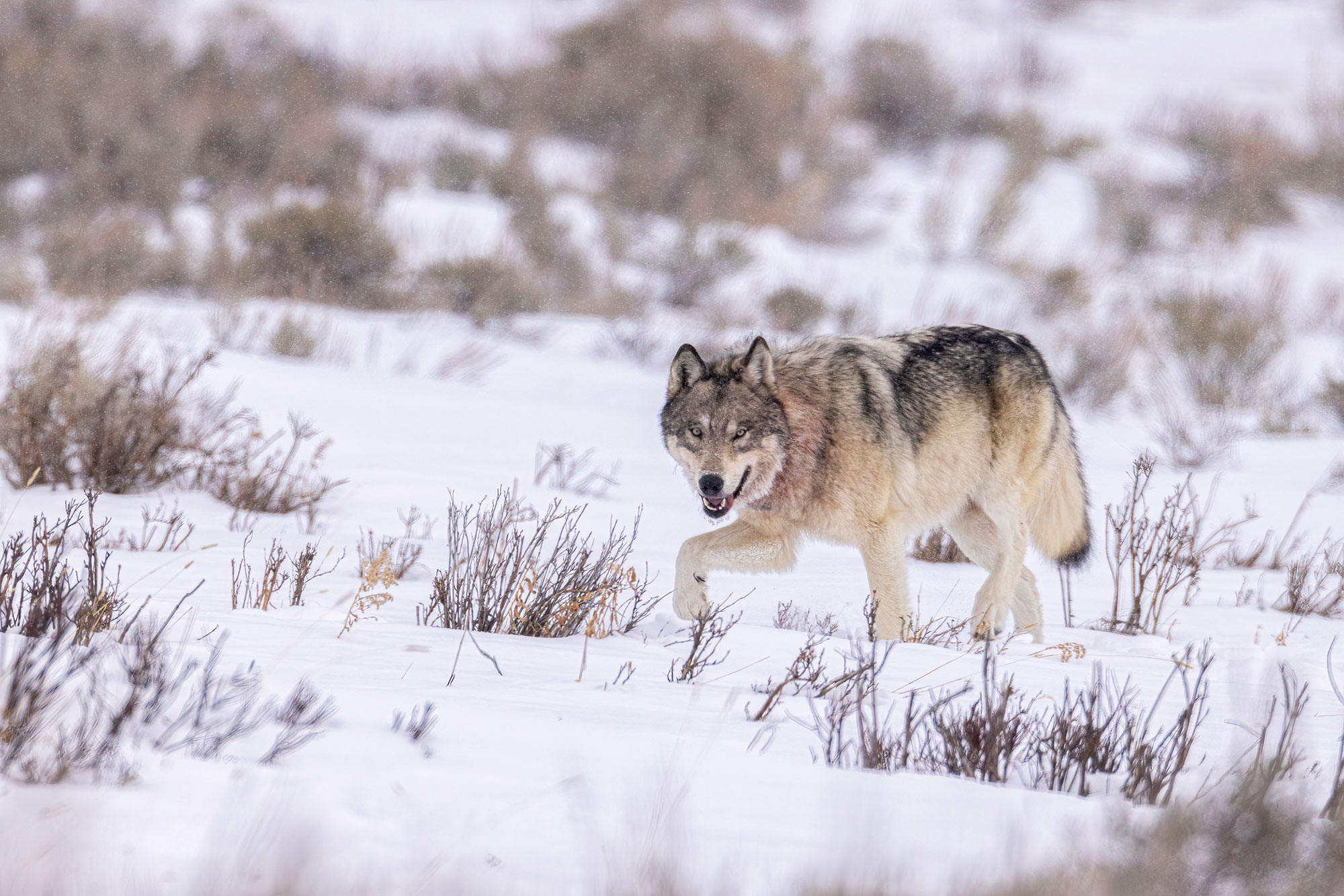
Colville’s place as the center of wildlife controversy may be replaced by Spokane this week. An hour and a half to the south, Spokane is the site of the annual conference of The Wildlife Society, the largest group of working wildlife biologists in the country. About 2,000 wildlife professionals have registered for the week-long conference that started Sunday, the first since Covid-19 shut down public gatherings.
The conference’s agenda is packed with wonky topics such as “Spatial Ecology and Modeling,” “Conservation of Native Pollinators in Managed Forest Ecosystems,” and “Biometrics and Population Monitoring.”
But it’s not just deer managers, vole researchers, and habitat-improvement vendors who have descended on downtown Spokane’s Davenport Grand hotel. Washington Wildlife First is here, too, hosting a reception tonight (Monday, Nov. 7). And they’ll be back on Thursday, participating in a panel discussion titled “Transforming State Wildlife Management to Be More Ecologically Focused, Democratic, and Compassionate.” That panel is moderated by Kevin Bixby, the head of Wildlife For All.
All this is too much for Brian Lynn. The vice president of marketing and communications for the Sportsmen’s Alliance, Lynn has called on some sponsors of the conference to pull their support, claiming that TWS is “allowing an organization intent on destroying a century of scientific management to air their anti-hunting beliefs at a national conference to a roomful of biologists.”
In a letter published Oct. 24, Lynn compared The Wildlife Society’s conference with another convention held in Spokane 19 years ago, the divisive session of the Outdoor Writers Association of America. The normally uncontroversial gathering of outdoor journalists cleaved that year along ideological fault lines as gun-rights groups lambasted the OWAA for accommodating environmental groups such as the Sierra Club. The rift ultimately spawned the creation of gun- and hunting-friendly Professional Outdoor Media Association.
“This is the first domino,” says Lynn (a former Outdoor Life editor) of the inclusion of animal-rights groups in The Wildlife Society convention, the marquee event for wildlife biologists. “Giving these anti-hunting groups a platform and an audience at a conference is in the playbook for breaking our conservation model. They want to eliminate predator hunting and with that our ungulate herds will decline and [the states will] sell fewer hunting licenses, and then agency funding will go away and then they’ll get their wish to have a new mandate.”
For his part, The Wildlife Society’s CEO, Ed Arnett, says the Washington group, as well as Wildlife For All, are welcome at the conference as long as they abide by rules of decorum and procedure and align with the group’s foundation in scientific inquiry.
“Our conference is open to all organizations and persons who are interested in wildlife resources and subscribe to our principles, bylaws, and code of ethics,” says Arnett, who doesn’t expect any open confrontation between groups. “We don’t want to exclude any organizations and voices simply because they have a difference of opinion—radical as it might seem to some.”
But Lynn and Thorburn both maintain the agency-reform groups’ ideology runs counter to TWS’s position, published in 2020, that concludes “foundational elements of the animal rights philosophy contradict the principles that have led to the recognized successes of wildlife management in North America.”
“Their stated positions plus their rejection of science should disqualify” both Washington Wildlife First and Wildlife For All from attendance, let alone hosting events, that give the appearance their positions are in the mainstream, says Lynn.
A Rising Divide
Spokane may be the flash point for this collision of values surrounding wildlife management in America, but it’s a conflict that has been arcing for decades, and has approached ignition in the past two years.
How do state wildlife agencies, funded primarily by anglers and hunters who buy licenses and tags, accommodate citizens with an interest in ecosystems, wildlife, and recreational access but who don’t hunt, fish, or contribute financially to conservation? And how do agencies remain relevant as America becomes more demographically diverse and we lose fish and wildlife habitat at an alarming rate? That’s the context for an ambitious project that started in 2018 and looked for ways state fish-and-game agencies could remain solvent and meaningful—both culturally and politically.
The Relevancy Roadmap, a deep investigation led by the Association of Fish and Wildlife Agencies into strategies to broaden the base of conservation in America, concluded that groups like Wildlife For All, the Sierra Club, Sportsmen’s Alliance, the NRA, and Northeast Washington Wildlife Group all have a role to play in how we manage fish and wildlife through the 21st century.
“The Fish and Wildlife Relevancy Roadmap charts the beginning of a new era focused on expanding the relevance of conservation to more diverse constituencies,” says the official Relevancy Roadmap report.
That sounds great in theory, but how do traditional wildlife managers—and the hunters and anglers who have for decades had the loudest or sometimes only voices in the allocation of resources—engage wildlife lovers who want to give every hunted animal a name? Or who believe that hunters are only interested in a game animal’s trophy parts? Or who are actively working to push hunting into obscurity?
“This is a conversation that’s been brewing for years, but nobody’s been wanting to have it publicly,” said an assistant agency director who didn’t want to speak on the record. “We have an increasing mutualist population that we need to figure out how to deal with or they’re going to deal with us. Ignoring or demonizing the population of Americans who cherish wildlife and value the habitats that they require is not the path forward.”
As a percentage of the population, fewer Americans are hunting and fishing while the percentage of Americans who don’t have a personal connection to the natural world is increasing. That doesn’t mean Americans care less about wildlife. Instead of considering wild animals on a population scale, more Americans associate with wildlife as individuals, their affection reinforced by social media and a “mutualist” orientation that stresses the interdependence of species.
Recall the global outrage over the legal killing of Cecil the Lion back in 2015? That incendiary defense of wildlife—especially charismatic carnivores—is likely to increase in coming years as mutualism defines our national character. Few younger Americans appreciate the widespread ecological benefit that license-buying hunters and anglers have provided to non-hunted species. Meanwhile, the number of license-buying hunters is on a long-term slide. Compounding those structural problems is a collision of competing wildlife values amplified by the schisms that are increasingly dividing Americans along ethnic, cultural, and political lines.
As Jim Martin, the legendary Oregon conservationist, noted “wildlife has gone from the sports page to the front page,” as fish and game conflicts have become more politically volatile and influenced by social-justice dynamics including equity and inclusion.
While some traditional hunters may dismiss these perspectives as “woke” or overly sensitive, wildlife managers are wise to pay attention to how social trends influence their work, says Tony Wasley, director of Nevada’s Department of Wildlife and a leader of the Relevancy Roadmap effort.
“Here’s the challenge,” says Wasley. “In my state, less than three percent of our citizens are engaged in any kind of hunting activity. Only eight percent of the species that we are statutorily charged with managing are pursued recreationally by hunters. So we have this challenge of getting money and support from the other 97 percent of the citizens of Nevada to take care of the other 92 percent of the species that we manage. We cannot do this with hunters alone.”
Who Funds Conservation?
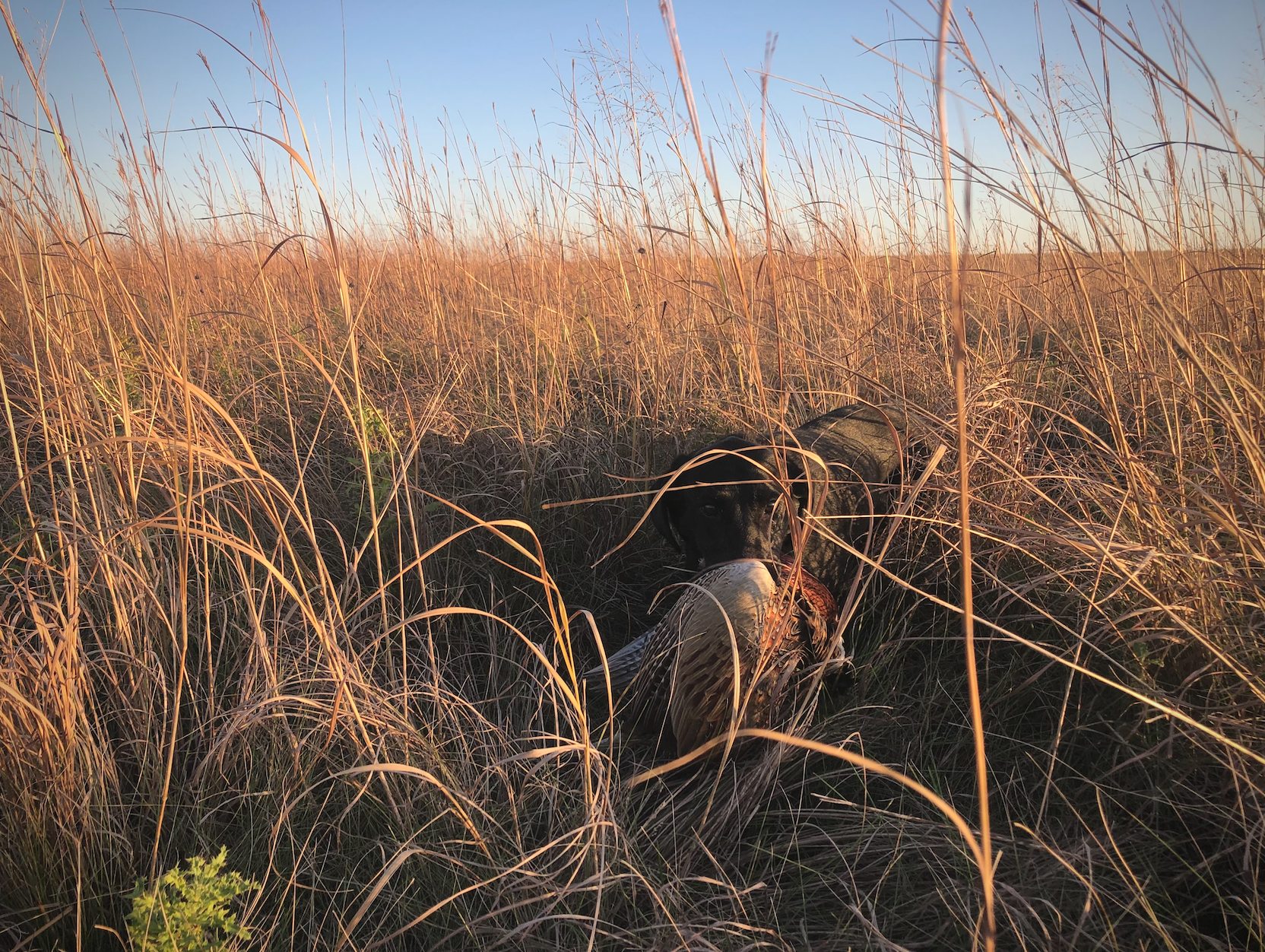
But hunters have historically been resistant to asking non-hunters to participate in either the funding or the management of wildlife in most states. Many vocal members of the sporting community have shot down the idea of a “backpack tax” that might broaden wildlife funding (top outdoor gear retailers have also resisted the tax). By perpetuating the narrative that hunters and anglers—through license fees—pay for most state-delivered conservation, they’ve managed to monopolize conversations about agency priorities.
“I’ve had sportsmen tell me point-blank that they don’t want anyone else having an opportunity to pay because they don’t want anybody to have an opportunity for a say,” says Nevada’s Wasley. “That’s the crux of it all. How can we get more people caring about wildlife, but not just caring about it in order to name it and save it?”
Wasley says neither pole is productive.
“You have the extreme traditional view that doesn’t want anyone else to be involved in wildlife decisions, whether that’s about trapping or predators or elk management,” says Wasley. “That’s a dictatorial position. But on the other end of the continuum you have folks who want to save every individual animal and shut out traditionalists. I come back to my state and maintain that if we can find those opportunities in the middle to get some of the 97 percent of the citizens to fund some of the 92 percent of the species that we’re responsible for, then we’ll have the capability to figure out how to manage those few species that are the most polarizing.”
Jim Heffelfinger puts the coming reallocation of resources in a sharper context.
“The majority of the public wants to see large carnivores restored on the landscape, and it would be a huge mistake if hunters positioned themselves on the opposite side of that overwhelming desire,” says Heffelfinger, wildlife science coordinator for Arizona Game and Fish Department. “Elk herds in a lot of Western states are robust enough to provide meat for both the hunting community and large carnivores. Hunters have to be willing to give up some cow elk tags in the name of large carnivore restoration, which hurts me to say because my dad and sons value cow elk tags more than most families.”
Equally important, says Heffelfinger, the extreme protectionist groups will need to compromise and allow the management of large carnivore populations on the landscape.
“Unnecessary protection foments extreme hate of those carnivores and the groups trying to protect them in perpetuity,” he says. “And it also wastes millions of dollars at the expense of other species that are disappearing from planet Earth. If you made a list of endangered species in need of saving, wolves would be at the bottom of that list.”
Ultimately, hunters aren’t really necessary to manage wildlife, says Kevin Bixby. Executive director of Wildlife For All, Bixby says predators should be considered the primary wildlife management tool by agencies, which should adopt values consistent with the animal-rights movement.
“If we want to save our own species, then we have to adopt an attitude of coexistence with all the other species,” says Bixby. “And we can’t do that if human needs are placed above other lifeforms. That is the bottom line. Some people will never agree to that.”
Hunters will continue to resist competition from predators, but also from other conservationists, adds Bixby, who wants to “democratize” wildlife management in America.
“Everyone should have a voice in wildlife governance, and everyone should pay for it, too, with general tax funding” he says. “But this is changing already. The number of hunters is declining, the percentage of Pittman-Robertson dollars contributed by non-hunters [new gun owners and recreational shooters] is 70 percent more than hunters contribute. We want to democratize the source of funding so that we can democratize decision-making.”
Bixby says wildlife agencies as they are currently configured don’t reflect the public trust, one of the pillars of the North American model of wildlife conservation. That’s a widely accepted construct that provides moral and legal authority to agencies to manage public wildlife as trustees. But Bixby says consumptive conservationists have misinterpreted the idea of “public trust.”
“One of the messages I hope to bring to Spokane is that the more people resist giving up power in wildlife governance, the less credibility they’ll have with the broader public,” says Bixby. “People complain about ‘ballot biology,’ but that’s what happens when your institutions are not responsive to the public.”
Bixby would like to start this “democratization” of wildlife agencies by broadening the definition of who can serve as a commissioner. “Right now, more than 75 percent of wildlife commissioners represent hunters or anglers or agriculture. We believe that’s undemocratic. The government as trustee of the resource has a duty to represent the interests of all the people.”
Sharpening Ideologies
Accommodating a diversity of viewpoints is nothing new to Chad Bishop. The director of the University of Montana’s wildlife biology program, Bishop’s graduates are as likely to take positions with environmental and conservation NGOs as they are to become biologists with fish-and-game agencies. He says the school is adding more social science courses to broaden students’ grounding in the hard science of wildlife biology in order to prepare them for jobs in a changing workplace.
What mustn’t change, he says, is relying on science to guide decisions. And what shouldn’t change, he says, is the statutory purpose of wildlife agencies.
“Let’s go back to the grounding principles of what we’re here to do, which is to conserve and manage wildlife,” says Bishop, who previously served as assistant director of Colorado’s wildlife agency. “If you can keep coming back to that purpose, then it’s easier to include groups with divergent viewpoints of how that gets accomplished. Easy to say, hard to implement.”
Wasley agrees.
“Maybe we don’t need to modify the representation of wildlife commissions as much as we need to ensure that the processes are true to the intent,” he says. “If we’re trying to realign wildlife commissions to a certain value system or ideology, then you’re going to have a guaranteed fight that looks a lot like all the other fights taking place over public policy in America.”
Back in Washington, Thorburn says the battle lines between consumptive and non-consumptive ideologies are sharpening.
“There’s a reason we’re seeing this culture war first in Washington,” she says. “We’re the smallest state in the West with the second-highest population, with increasing numbers of people who have never experienced wildlife in the wild. Meanwhile, you have tens of thousands of people pushing into shrinking wildlife habitat. My view is that if you want to keep wildlife on the landscape, then you need to support what our Fish and Wildlife Department does, which is to find balance. That’s the best definition of relevancy I can think of.”
Thorburn, who has applied for another 6-year term on the commission, is pessimistic about her chances in the charged political atmosphere in Washington.
“Let’s just say the governor took me off his Christmas card list,” she says. “But I’d like to continue to serve to try to heal this growing rural/urban divide. I think we’re deliberately setting fire to what we’ve built, which is why the people in Colville are so vocal. If we cannot manage wildlife so that the people who live with wildlife are included, then we’re going to fail. But sometimes I think that’s what the other side would like.”
Back at the Davenport Hotel in Spokane, Arnett says he feels blindsided by the controversy that this week’s conference has revealed. But he’s taking the long view.
“I think it’s good and healthy to have these discussions, and TWS is the right venue to have them, as long as they’re balanced and professional and ultimately based in science,” says Arnett. “If there’s science to support a different approach, then we should be paying attention to it, whether we agree with it or not. Besides, where would you rather this conversation played out? On social media? In the courts?”

